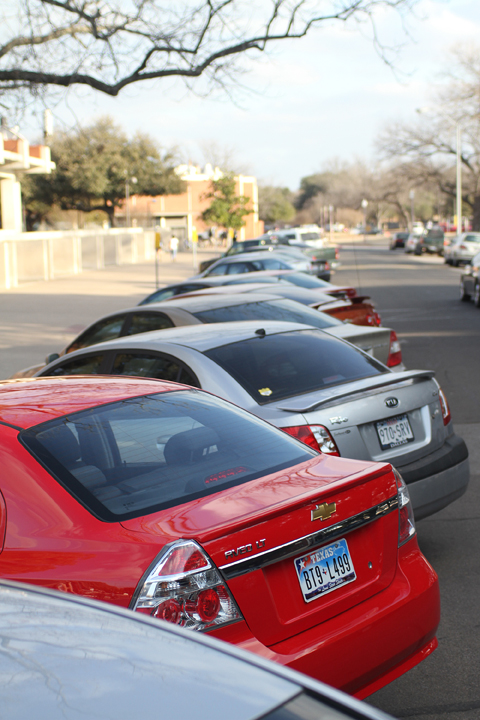
By Rachel Ambelang
Staff Writer
Guest speaker Matt Penney, director of parking and transportation services, joined Student Senate on Thursday to discuss the seemingly constant problem of limited student parking.
Penney said he believes more student input on the issue is important.
“When I first got [to Baylor]…to me it was very obvious that one of the first priorities that parking and transportation needed to do was get better at communicating, specifically with students,” he said.
Penney said he often hears the opinions of faculty and staff about the parking issues, but said he rarely hears from students unless a decision has been made that upsets them.
He said his goal is to hear from students sooner so they can be involved in the process of improving the parking situation.
This year, parking and transportation services tried a tiered parking permit system to give students different options both in areas of parking and in price range.
The idea was to encourage students to park in spaces off campus to free up the overcrowded garages in the center of campus.
Penney said he thought his team had come up with good products for students, such as the parking permit for the East Campus Garage at a 40 percent discount of the regular price and a permit for the Ferrell Center at a 60 percent discount. Baylor University Shuttle stops are located at both areas with eight-minute service running from 7:30 a.m. to 5:30 p.m.
The plan did not go as well as Penney said he had hoped. The East Campus Garage has 800 parking spaces, but Parking Services sold only 220 permits for that area.
Likewise, the Ferrell Center is capable of holding more than 2,200 cars but sold just over 50 permits.
“Maybe we didn’t market it correctly,” Penney said about the lack of sales. “Maybe there’s some other things we need to do to make that more appealing.”
Penney met with the assistant director of parking and transportation from A&M on Friday to discuss what methods he is using at his campus.
A&M uses a zone parking system, meaning students are sold parking decals to specific locations and must park there for the entire school year.
Penney said switching to this system would enable Parking Services to better distribute parking spaces and space availability, but he also said he knows it would not be convenient for every student.
San Antonio sophomore Thomas Damrow, a member of Student Senate, discussed A&M’s involvement with Penney.
“They are working on different plans to help with parking, but they might have to scale it down to our smaller university,” Damrow said.
Many senators exchanged questions and ideas with Penney, from an app that will tell students when a garage is full to whether or not building the garages higher is possible. Feedback was mostly positive both about the director and his suggestions for improvement.
“I thought he was really direct and straightforward with us,” said Houston junior senate member Blessing Amune. “I thought he tried his best to give us as much information as possible.”
When a student senator asked if Baylor had plans to build more garages, Penney said, “Right now we have the East Campus Garage that does not fill up, and it’s very unlikely that Baylor is going to invest several million dollars in additional parking garages when we have one that is under-utilized.”
Penney said his goal is to maintain options for students and voiced concern with the current system.
“I don’t see student parking being successful if we continue on with what we’re currently doing,” Penney said.
Penney said his job now is to figure out what needs to change and what works best for everyone.





